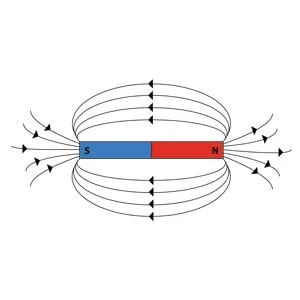How do Magnets Work?

Listen to this Article
At the core of every magnet is a magnetic field. A magnetic field is a region of space where a magnetic force can be detected. It is created by the motion of charged particles, such as electrons. Every atom has electrons that orbit around the nucleus. When the electrons are aligned in the same direction, they create a magnetic field. However, most materials have electrons that are paired, which means that their magnetic fields cancel each other out, and the material is not magnetic.
But some materials, such as iron, nickel, and cobalt, have electrons that are aligned in the same direction naturally, creating a magnetic field. These materials are called ferromagnetic materials, and they are used to make permanent magnets.
When you place two magnets near each other, they can either attract or repel each other depending on their orientation. Opposite poles attract each other, and like poles repel each other. This is because the magnetic field around the magnets interacts with each other.
The strength of a magnet depends on the number of electrons that are aligned in the same direction. The more electrons that are aligned, the stronger the magnetic field. Also, the distance between the two magnets affects the strength of the magnetic force. The closer the magnets are, the stronger the magnetic force.
Magnets are used in many applications, such as motors and generators. In a motor, the interaction between the magnetic field and an electric current creates a rotational force that powers the motor. In a generator, the opposite happens. A rotating magnetic field creates an electric current, which generates electricity.
In conclusion, magnets work because of the interaction between the magnetic field and the motion of charged particles, such as electrons. The strength of a magnet depends on the number of electrons that are aligned in the same direction, and the distance between two magnets affects the strength of the magnetic force. Magnets are used in many applications, such as motors and generators, because of their ability to create and interact with magnetic fields.
